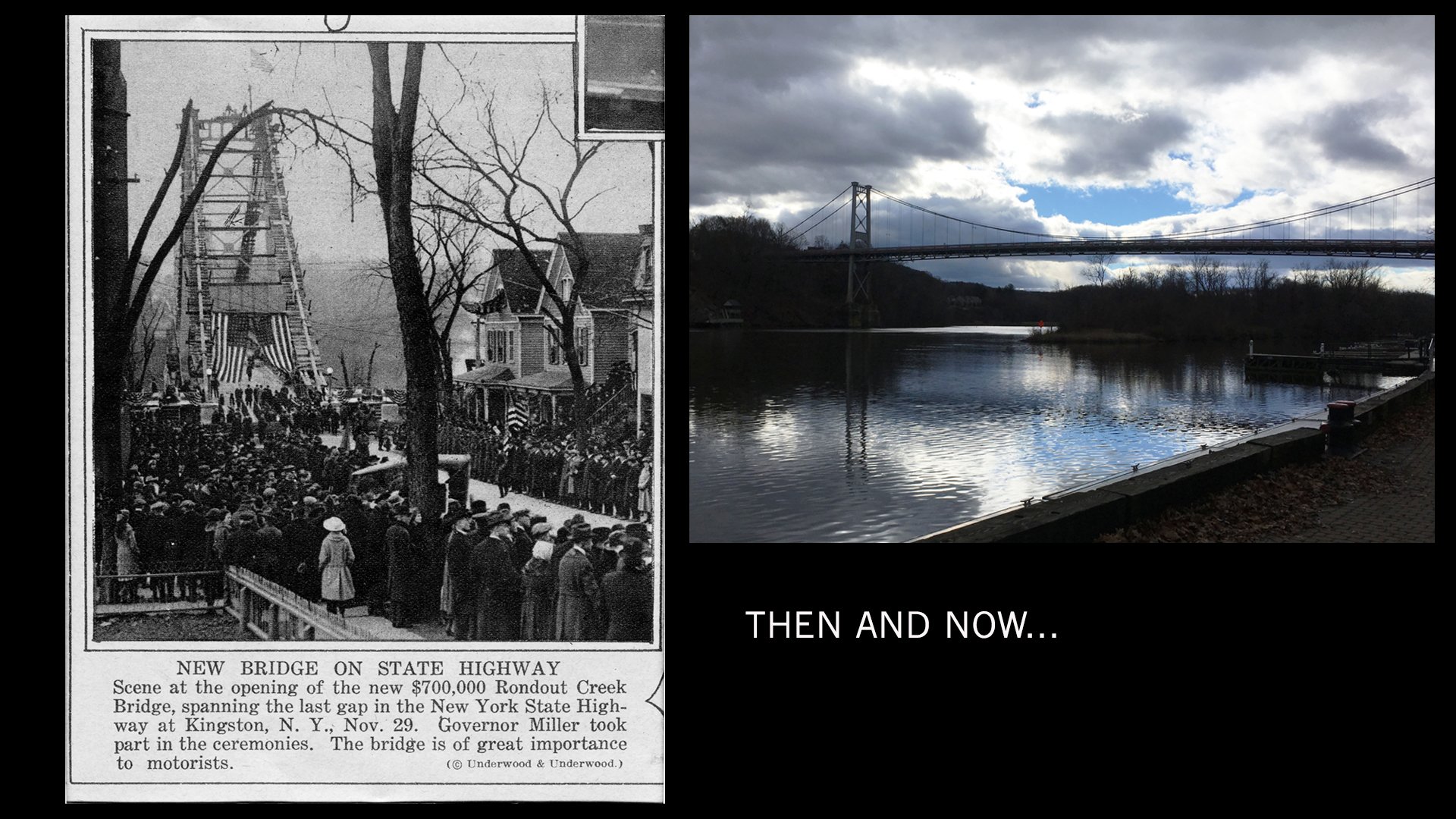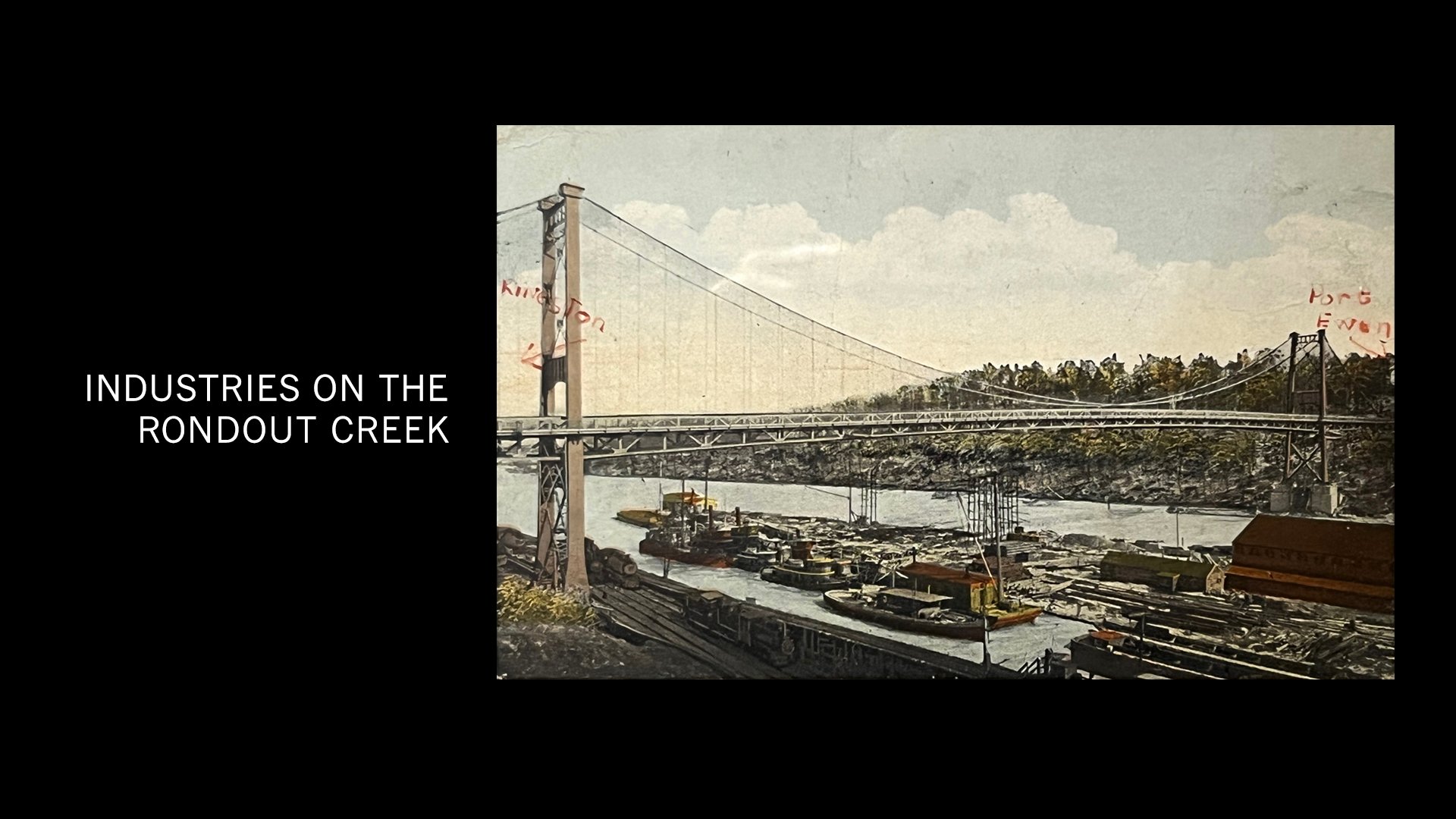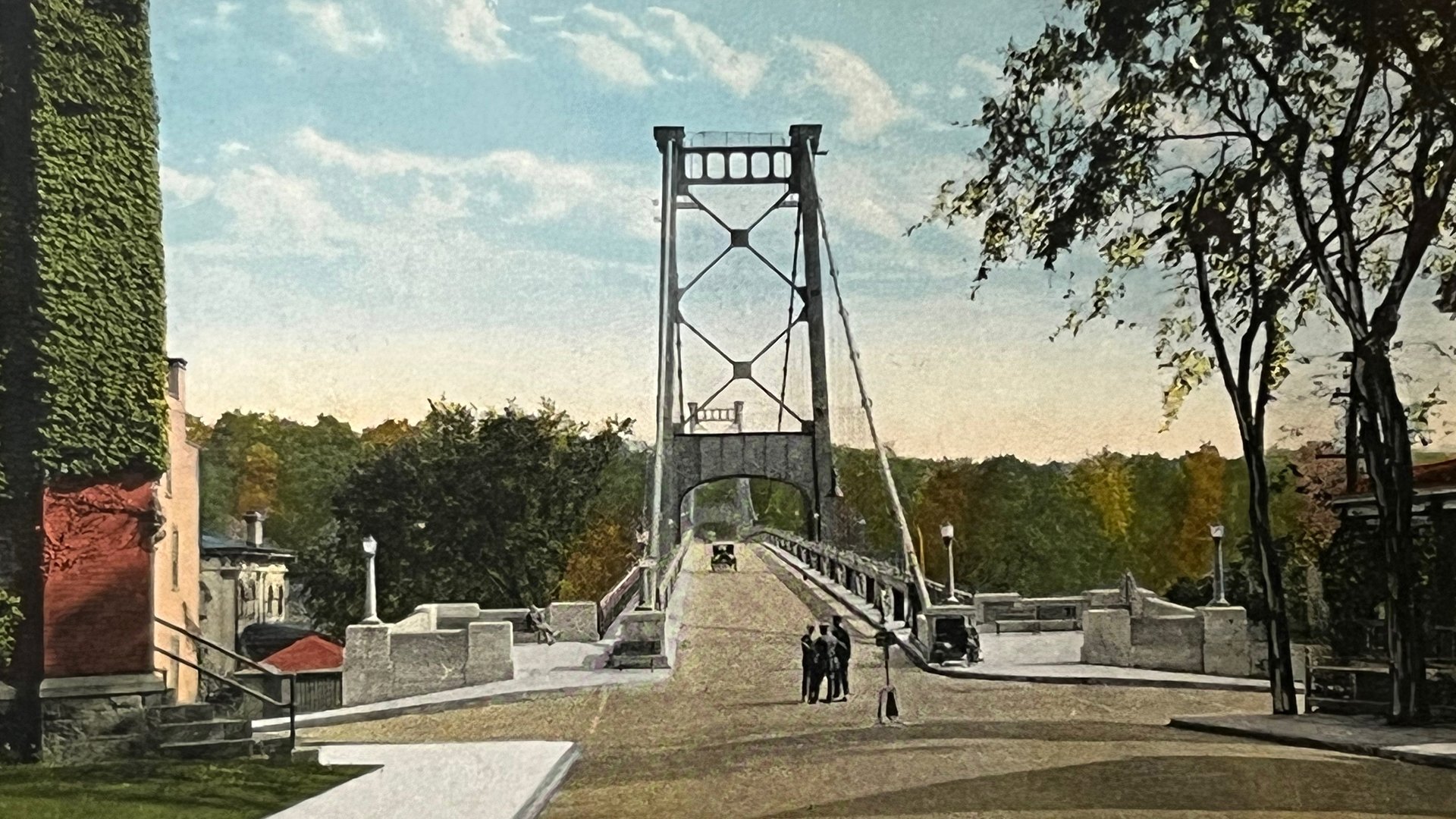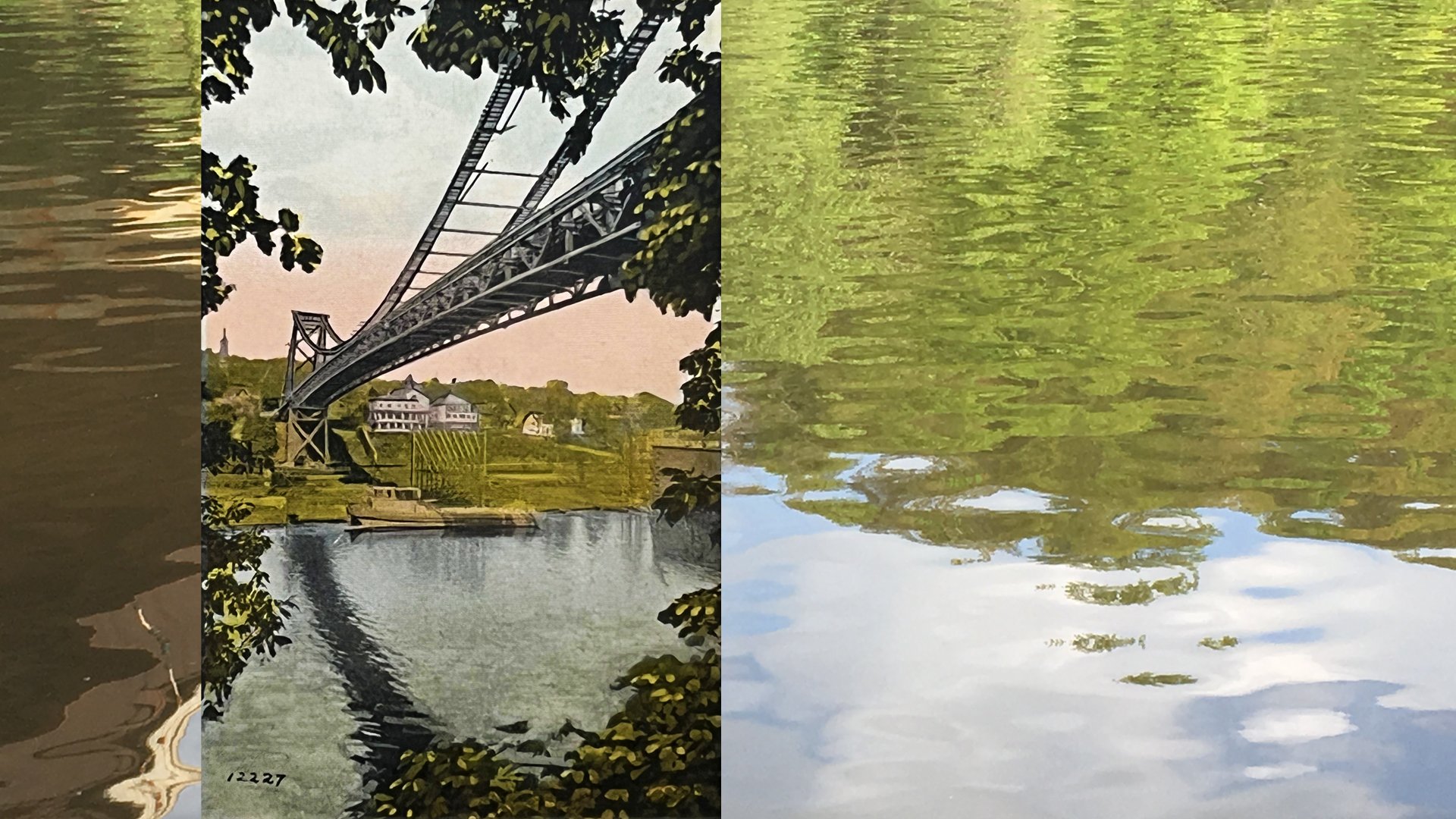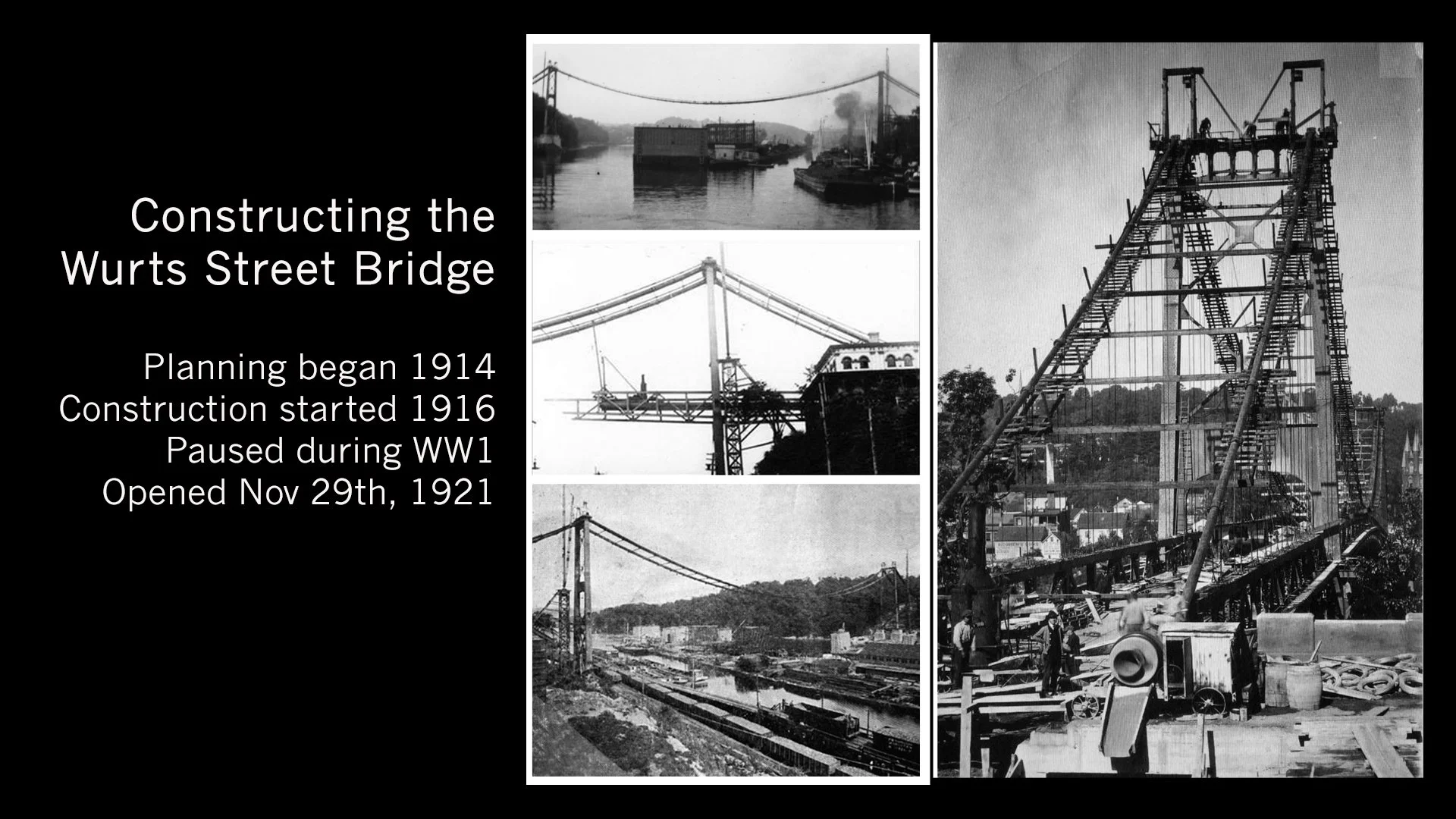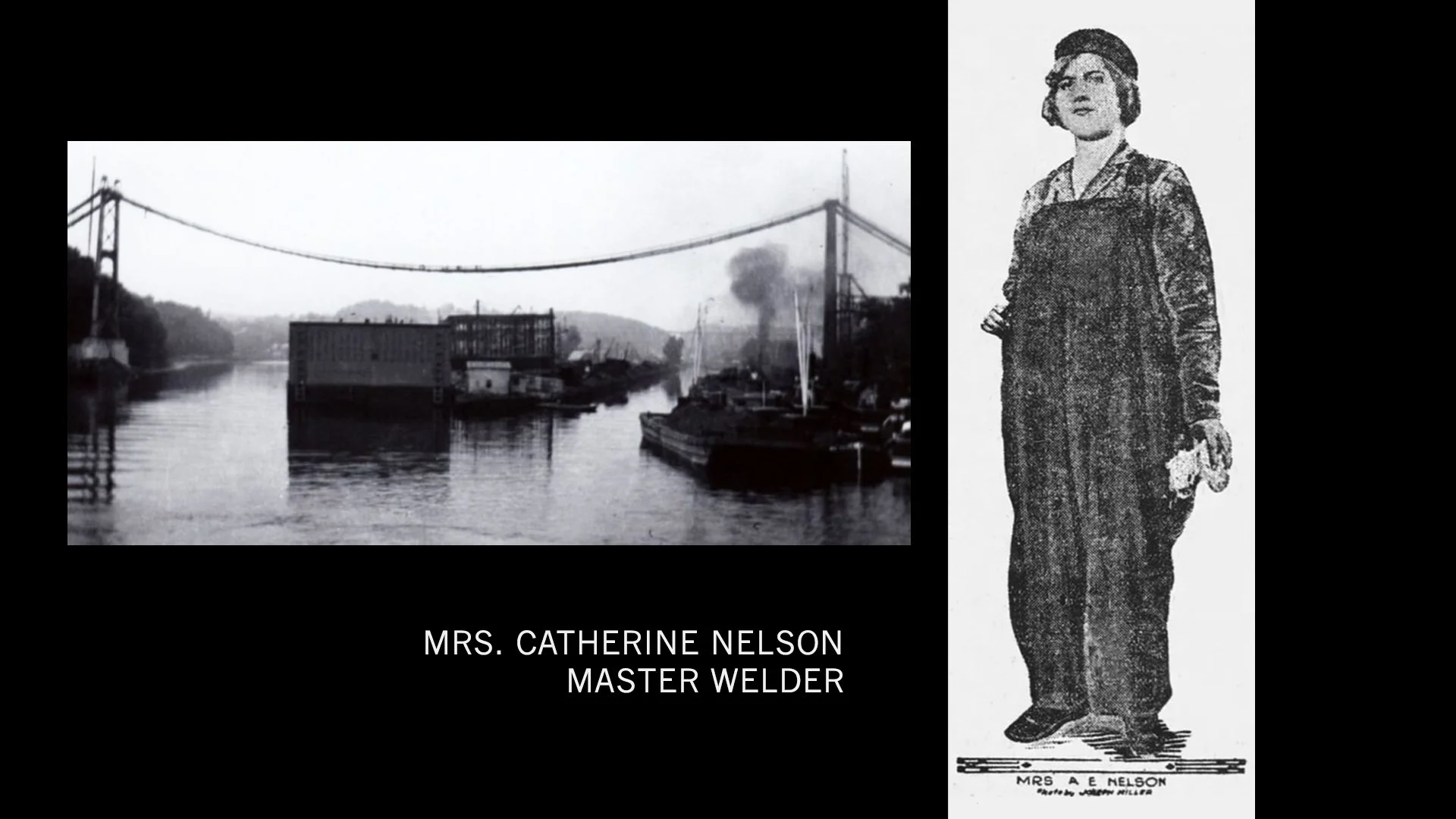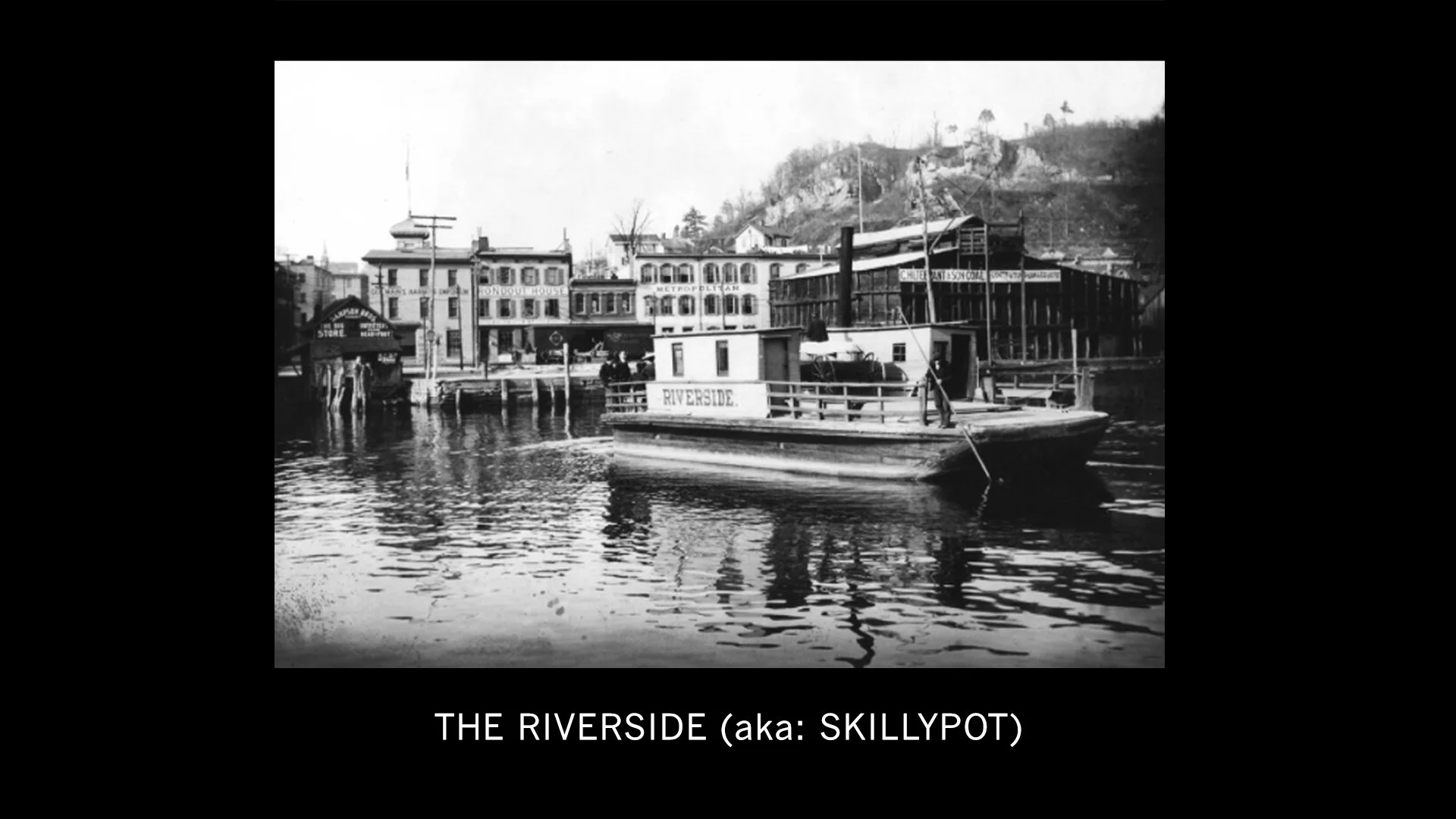HISTORY
The beautiful Wurts Street Bridge in Kingston, NY is being restored after a century of spanning the Rondout Creek! This suspension bridge connects the city of Kingston and the town of Port Ewen. It was built as the last link of roadway running continuously from NYC to Albany. The plan started as early as 1916 but the project was Interrupted by politics, funding issues and WW1. After the war, construction finally began and the bridge opened with great fanfare in 1921. Who were the designers and engineers who had the vision and expertise to build this lovely structure? Who were the local workers and laborers that worked with the bridge contractors?
We are crafting this story in the context of the area’s complicated history. It was built shortly after World War I - with all its horrors and sorrows. The nation also suffered the ravages of the influenza pandemic of 1918... It's hard not to see the parallels in our own challenging times.
The bridge is a metaphor, Connecting the past to the present ...Connecting us with those who came before.
What was the state of the community after those tragic war years? The Rondout had been a thriving, hardworking waterfront in the past, but many industries had declined or disappeared. How did the building of the bridge impact on the community? What industries were still functioning? It contains in its history, clues about community, technology and historic chapters in our society.
Our job is to follow the renovation and illuminate the stories it reveals.
CATHERINE NELSON
As we researched the back stories, we've discovered some wonderful characters... You may have heard about the famous woman welder who worked on the Wurts Street bridge when it was being built. Thanks to the research of Maritime Museum's George Thompson, we know a bit about her.
Catherine Nelson was from Denmark and learned machine skills in the garage her husband ran there. When he died, she was left a widow with 2 small children to raise on her own. For two years she worked as a stewardess on an ocean liner, but she couldn’t have her children with her and the pay was bad. At some point she arrived in America and cast about for what she described as "harder and better paid work" so she could own her own home. She ended up getting a job in a machine shop where they had an electrical welding department. She loved the work... and, it paid $30 a day! She was sure footed, had no fear of heights, prided herself on never turning down dangerous work and apparently never had an accident.
Seven years later, in 1921, Terry & Tench, the contractors building the Wurts Street Bridge, asked the Weehawken Welding company for their best operator. They sent Catherine Nelson! She was responsible for welding together the cable splices that made up the longest length of the cable span. She was reportedly the only outdoor woman welder in the world.
Crowds gathered in awe of the fearless figure walking high above the Rondout, splicing and welding cable for the bridge and they were amazed to find out the worker was a woman! We can't help but wonder how many women and young girls were inspired by the sight - a skilled, independent woman working in a decidedly tough man's world... not only holding her own, but thriving and providing for her family. She reminds us of the character of Rosie the Riveter -- women who, when necessity called during World War II, proved their mettle and opened a door for women to venture into jobs where men had exclusively held sway.
Today, a century later, the crew working on the Renovation of the Wurts Street Bridge, includes 4 highly valued women workers... including an iron welder! The Department Of Transportation commissioner is a woman, as is the governor!
The Riverside, famously known as The Skillypot was a chain driven ferryboat that connected Sleightsburgh and Kingston across the Rondout Creek before the Wurts Street Bridge was built. Once the bridge was open to traffic, she was rendered obsolete but the owners carried on. The Skillypot was finally decommissioned a year later, ending an era.
Our focus is on people... people who bring these structures to life.
GALLERY
